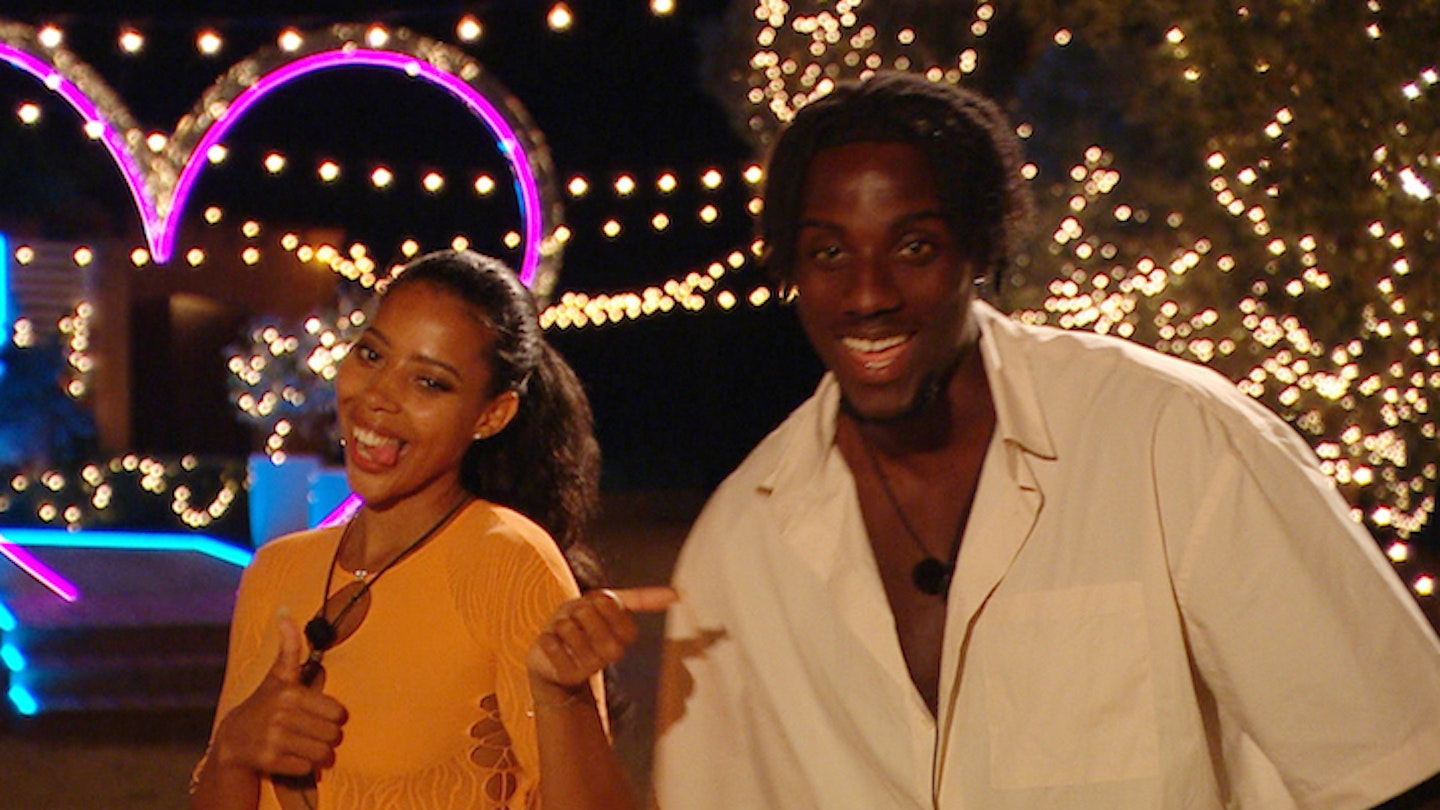Since returning to our TV screens earlier this summer, Love Island has once again dominated conversations among friends, colleagues and strangers on the internet. This year, like previous years, the topic of race has featured in much of the discourse. So, why exactly is it so hard for the show to get it right when it comes to its Black and Brown contestants, eight seasons in?
This season started off promising, with fans praising the show for its ‘most diverse casting to date’ when the first Islanders were announced — four of whom were Black: Ikenna Ekwonna, Indiyah Polack, Dami Hope and Amber Beckford were introduced among the otherwise all-white cast.
While some viewers celebrated their arrival, others were wary about the way they would be treated, given the experience of Black islanders — Black women in particular – on the show. From season four’s Samira Mighty to season five’s Yewande Biala, and again last year with Kaz Kamwi, dark-skinned women are often in a position where they never seem to be the male contestants’ ‘type on paper’. They’re frequently left as last picks and in ‘friendship couples’, while their white counterparts, often with blonde hair and blue eyes, are deemed the most desirable.
In 2019, Samira –who was the first Black woman to enter the villa in 2018 – commented on Yewande’s experience, who like her, wasn’t picked by any of the men in the initial coupling. ‘I was obviously the token [black woman] on the show, it was easy to work that out. I only had to look at the line of girls when I arrived at the villa,’ she told The Mail on Sunday at the time. ‘There was nobody else who looked like me.’
Black women are frequently left as last picks while their white counterparts are deemed most desirable.
Fast forward a couple of years and while the number of ethnic minorities on the show may have been bumped up a little but many of them similarly struggle to navigate the predominately white dating space of the show. If continuously, Islanders of colour are not deemed ‘desirable’ it only serves to reinforce the discriminatory notion of Eurocentric beauty ideals.
This season, the first four Islanders to be dumped from the villa following a public vote were all Black: bombshells Afia Tonkmor and Remi Lambert, and later Ikenna Ekwonna and Amber Beckford. Things were similar last year when Shannon Singh, Rachel Finni, Sharon Gaffka and AJ Bunker (all women of colour) became the first women to be booted off.
Is this the kind of representation we even want? If Black and Brown people are selected for the show and up playing second fiddle to the white contestants and become the firsts to be ‘pied off’ when it comes to dumpings and recouplings, then frankly, we’d rather be left out of it altogether.
For years, many viewers have been demanding a more inclusive Love Island line-up, not only when it comes to race but sexuality and body image. But how much good does it actually do if this is how diverse contestants fare on the show? The truth is, repeatedly watching the rejection Black and Brown contestants face on the show — as well as other reality TV shows with similar concepts like The Bachelor or Take Me Out — removes any viewing enjoyment from it.
Much of this is, of course, a reflection of dating in real life, where numerous statistics from dating apps like Hinge, Tinder and Bumble have shown over the years that Black women and Asian men receive the least amount of ‘right swipes’. Racial discrimination in dating isn’t a new thing but if reality TV as a genre has a genuine interest in creating more diverse shows, then they need to create a level playing field for all contestants.
For example, casting directors on dating-based shows should do the work to ensure contestants of colour have potential suitors who actually fancy them because there are plenty of people who are not interested in slim white women of a certain aesthetic.
The US version of Love Island (although with flaws of its own) is a prime example of how this can be done. Both the second and third season of the show resulted in Black couples whose love stories we got to watch blossom in the villa. In fact, season two’s Justine Ndiba and Caleb Corprew made history as the first Black couple to win Love Island — something we have yet to see on the UK version of the show. While this has a lot to do with the fact that the US is a country where Black people date each other at almost double the rate of the UK, it also goes to show that Black or interracial love can be displayed if the casting process is geared towards finding compatible matches.
So, enough with the tokenism and half-hearted efforts to appear ‘diverse’ on the surface. Reality TV shows are meant to imitate real life and sadly, racial discrimination is just as rife on the outside world as it is in the villa. However, that doesn’t mean thatproducers can’t do more to set their Black and Brown contestants up for success, just like they’ve continuously done for white contestants.
